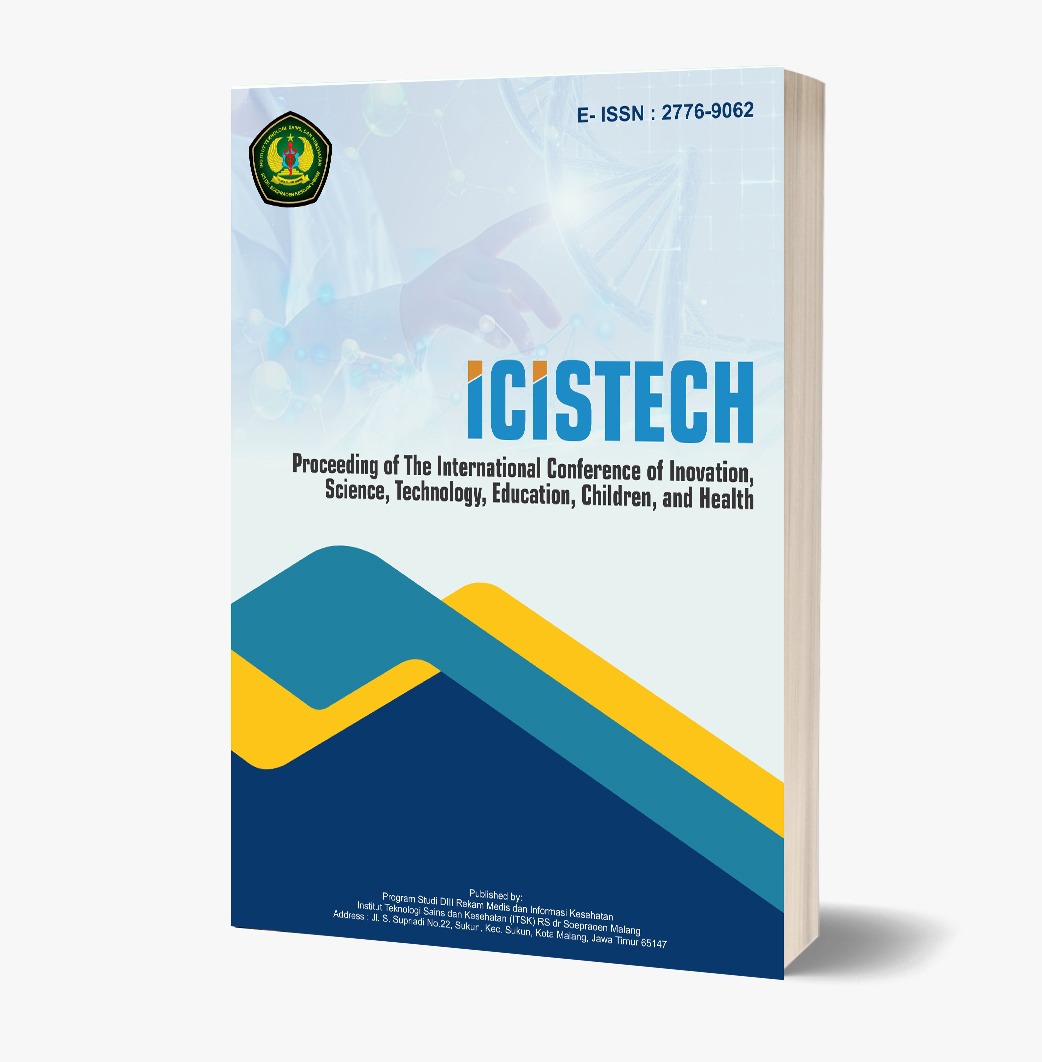The Impact of Maternal Age on the Incidence of Low Birth Weight in Newborns
DOI:
https://doi.org/10.62951/icistech.v5i1.216Keywords:
Age, Infant Weight, Low BirthAbstract
Low birth weight (LBW) is a significant public health problem, with varying prevalence across countries. According to data from the World Health Organization (WHO), approximately 15% of all births worldwide are LBW babies. LBW can be caused by various factors, including maternal health conditions, nutritional status, and environmental factors. One factor that is often overlooked is maternal age during pregnancy. This study aims to explore the relationship between maternal age and the incidence of LBW. Research This study used an observational design with a cross-sectional approach. The sample consisted of 200 pregnant women who gave birth at the Hospital in 2024. Data were collected through medical record data tracing, which included maternal age, infant birth weight, and other risk factors. Statistical analysis was performed using the chi-square test to determine the relationship between maternal age variables and LBW. Results: The results of the analysis showed that 32% of the total babies born had LBW. From the age group under 20 years, the prevalence of LBW reached 15%, while in the age group over 35 years it reached 9%. After conducting the Spearman test in the Halsil test, the significant relationship between maternal age and the incidence of LBW was p (Sig) 0.02 (<0.05). Public health programs should focus more on education and intervention for pregnant women, especially those in their teens and the elderly. This is important to reduce the number of LBW and improve maternal and infant health. In the future, further research is needed to explore other factors that may affect LBW.
References
Aboagye, R. G., Ahinkorah, B. O., Seidu, A. A., Frimpong, J. B., Archer, A. G., Adu, C., ... & Yaya, S. (2022). Birth weight and nutritional status of children under five in sub-Saharan Africa. PLOS ONE, 17(6), e0269279. https://doi.org/10.1371/journal.pone.0269279
Arsyi, M. (2021). Maternal factors affecting the incidence of low birth weight (LBW) in Indonesia. International Journal of Pharmaceutical Research, 13(1), 4197-4203. https://doi.org/10.31838/ijpr/2021.13.01.557
Dennis, J. A., & Mollborn, S. (2013). Young maternal age and low birth weight risk: An exploration of racial/ethnic disparities in the birth outcomes of mothers in the United States. The Social Science Journal, 50(4), 625-634. https://doi.org/10.1016/j.soscij.2013.09.008
Dolatian, M., Mahmoodi, Z., Alavi‐Majd, H., Moafi, F., Ghorbani, M., & Mirabzadeh, A. (2016). Psychosocial factors in pregnancy and birthweight: Path analysis. Journal of Obstetrics and Gynaecology Research, 42(7), 822-830. https://doi.org/10.1111/jog.12991
Getaneh, T., Negesse, A., Dessie, G., & Desta, M. (2020). The impact of pregnancy-induced hypertension on low birth weight in Ethiopia: Systematic review and meta-analysis. Italian Journal of Pediatrics, 46, 1-11. https://doi.org/10.1186/s13052-020-00926-0
Goisis, A., Remes, H., Barclay, K., Martikainen, P., & Myrskylä, M. (2017). Advanced maternal age and the risk of low birth weight and preterm delivery: A within-family analysis using Finnish population registers. American Journal of Epidemiology, 186(11), 1219-1226. https://doi.org/10.1093/aje/kwx177
Iacono, C. D. (2024). Social inequalities, advanced maternal age, and birth weight: A cross-sectional study. Journal of Maternal and Child Health, 29(1), 45-52. https://doi.org/10.1016/j.jmch.2023.11.003
Kemenkes RI. (2021). Laporan Survei Kesehatan Nasional 2020. Kementrian Kesehatan Republik Indonesia.
Kim, H. E., Song, I. G., Chung, S. H., Choi, Y. S., & Bae, C. W. (2019). Trends in birth weight and the incidence of low birth weight and advanced maternal age in Korea between 1993 and 2016. Journal of Korean Medical Science, 34(4). https://doi.org/10.3346/jkms.2019.34.e34
McCall, E. M., Alderdice, F., Halliday, H. L., Vohra, S., & Johnston, L. (2018). Interventions to prevent hypothermia at birth in preterm and/or low birth weight infants. Cochrane Database of Systematic Reviews, (2). https://doi.org/10.1002/14651858.CD004210.pub5
Momeni, M., Danaei, M., Kermani, A. J. N., Bakhshandeh, M., Foroodnia, S., Mahmoudabadi, Z., ... & Safizadeh, H. (2017). Prevalence and risk factors of low birth weight in the Southeast of Iran. International Journal of Preventive Medicine, 8. https://doi.org/10.4103/ijpvm.IJPVM_112_16
Ramadani, A., Sartika, A., Bayang, T., Sinaga, A., Leonita, A., & Nababan, T. (2024). HUBUNGAN GIZI DAN USIA IBU DENGAN ANGKA KEJADIAN BBLR DI PUSKESMAS KOTA DATAR. Healthcaring: Jurnal Ilmiah Kesehatan, 3(1), 27-33. https://doi.org/10.47709/healthcaring.v3i1.3526
Wardana, H. N., Annasari, A., Sugijati, S., & Kostania, G. (2024). Hubungan Faktor Risiko Usia Dan Paritas Ibu Dengan Kejadian Bayi Berat Lahir Rendah (BBLR) Di RSUD Tongas Probolinggo Tahun 2022. Innovative: Journal Of Social Science Research, 4(3), 1772-1780.
WHO. (2021). Global Nutrition Report 2021.
Zheng, S., Wang, Y., & Li, H. (2024). Prevalence and risk factors of low birth weight in the United States: A national study. American Journal of Public Health, 114(4), 567-574.
Downloads
Published
How to Cite
Issue
Section
License
Copyright (c) 2025 Proceeding of The International Conference of Inovation, Science, Technology, Education, Children, and Health

This work is licensed under a Creative Commons Attribution-ShareAlike 4.0 International License.













